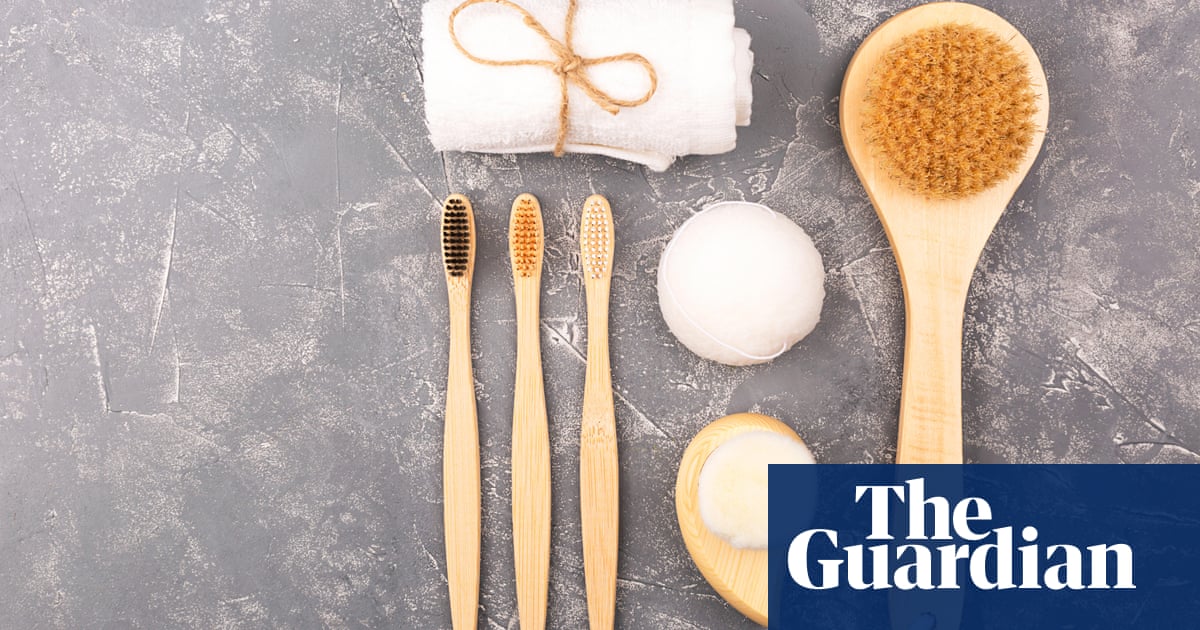
Search out alternatives
“A bamboo toothbrush is the first swap I always suggest,” says Beth Noy, who founded the online shop Plastic Freedom in frustration at the lack of easily available alternatives to everyday plastic items. She also suggests swapping disposable razors for a safety razor, using bars of soap and shampoo instead of bottles, switching from cottonwool pads to resuable cleansing pads and tampons to menstrual cups, and seeking out mouthwash tablets. Jen Chillingsworth, author of Live Green: 52 Steps for a More Sustainable Life, suggests using a mesh “soap-saver” bag. “Put the soap bar in the bag, wet the bag and use it as an exfoliating scrub. Any broken bits of soap are contained and nothing is wasted.” She also recommends a konjac sponge for cleansing because the naturally derived and gently exfoliating sponges are biodegradable and compostable. Plastic-free earbuds are also available.
Reduce waste gradually
“Use up what you have before buying anything new,” says Chillingsworth. “Start simple and change one thing at a time. It’s useful to see how a new product works for you before changing anything else.” Noy says gradual change can be especially helpful for those on a tight budget. “If you make a list of all the plastic items you have in your home and alternatives you want to swap them for, you can then budget to make a couple of swaps a month.”
Go for refill options
More and more brands now offer bulk refill options. Salt of the Earth sells one-litre refills of its natural deodorant, while brands such as Ecover have a range of five-litre refills. Many zero-waste shops also offer refill stations where you can top up your own containers. Chillingsworth suggests making some products yourself, such her “oat bath blend”. Place a handful of porridge oats in a muslin square, add a few dried lavender flowers or rose petals and tie into a bag. Place under the running bath water. Add essential oils for a stronger fragrance.
Recycle
While 90% of packaging in kitchen is recycled, only 50% from the bathroom gets the same treatment, according to the Recycle Now campaign. One option recommended by the Circular Economy Taskforce is to keep a separate recycling bin in the bathroom. Some beauty brands, including Mac and Kiehl’s, run packaging return programmes, and Beauty Kitchen runs a return-refill-repeat programme for its products. Lush has a wide range of body and haircare bars and a recycling scheme for its black pots, and offers a variety of packaging-free products.
Join a zero-waste group
While some plastic swaps are straightforward, accessibility and expense can vary. Chillingsworth suggests searching for zero-waste groups in your area (there are many on Facebook). “They can guide you to local refill stores or suggest plastic alternatives for whatever you are looking for.” She also encourages researching products on websites such as the Ethical Consumer before buying them. Be mindful of greenwashing, she warns: “Lots of brands shout about their green credentials, but often are not entirely truthful.”
This article contains affiliate links, which means we may earn a small commission if a reader clicks through and makes a purchase. All our journalism is independent and is in no way influenced by any advertiser or commercial initiative. By clicking on an affiliate link, you accept that third-party cookies will be set. More information.
Source: TheGuardian
